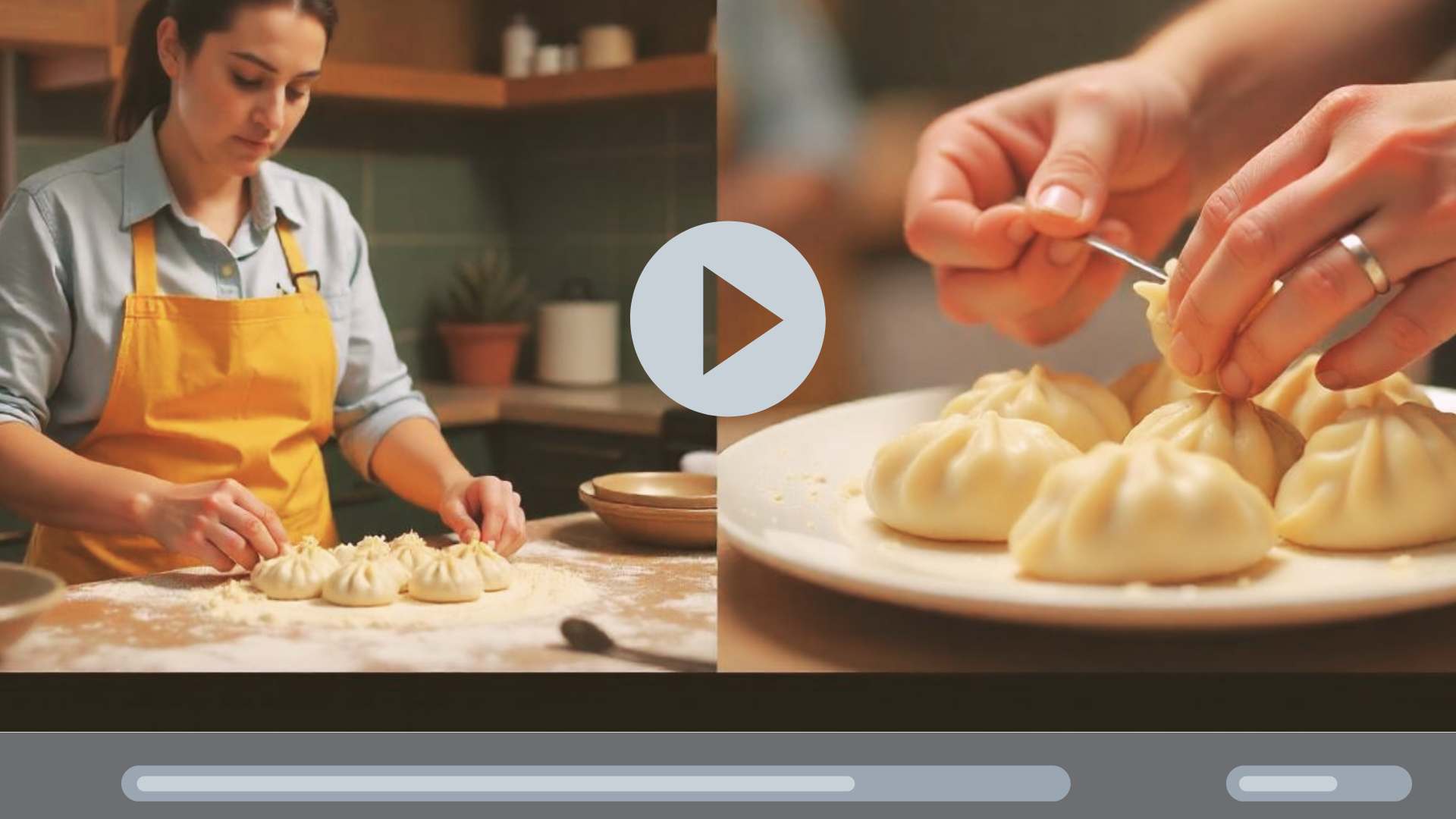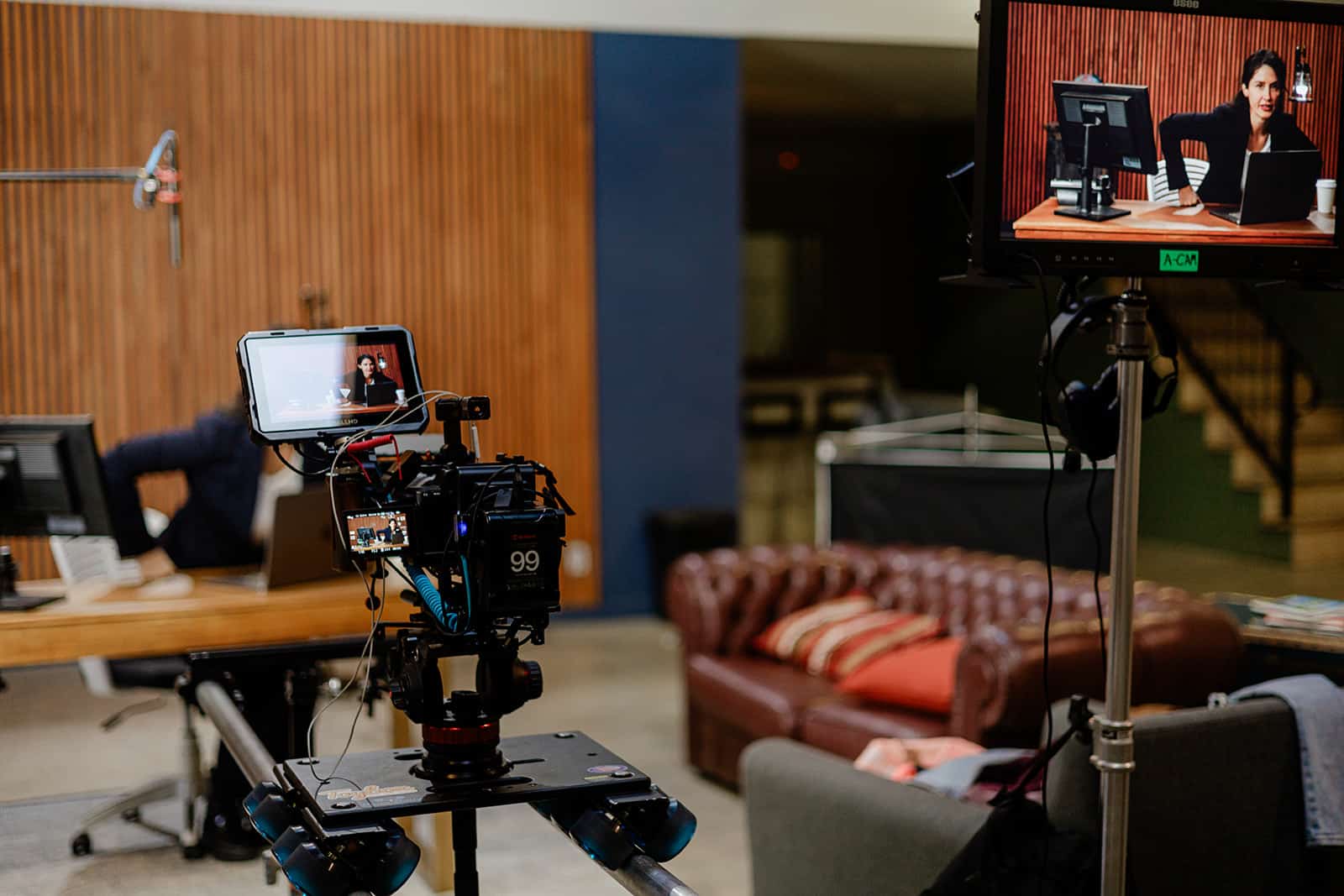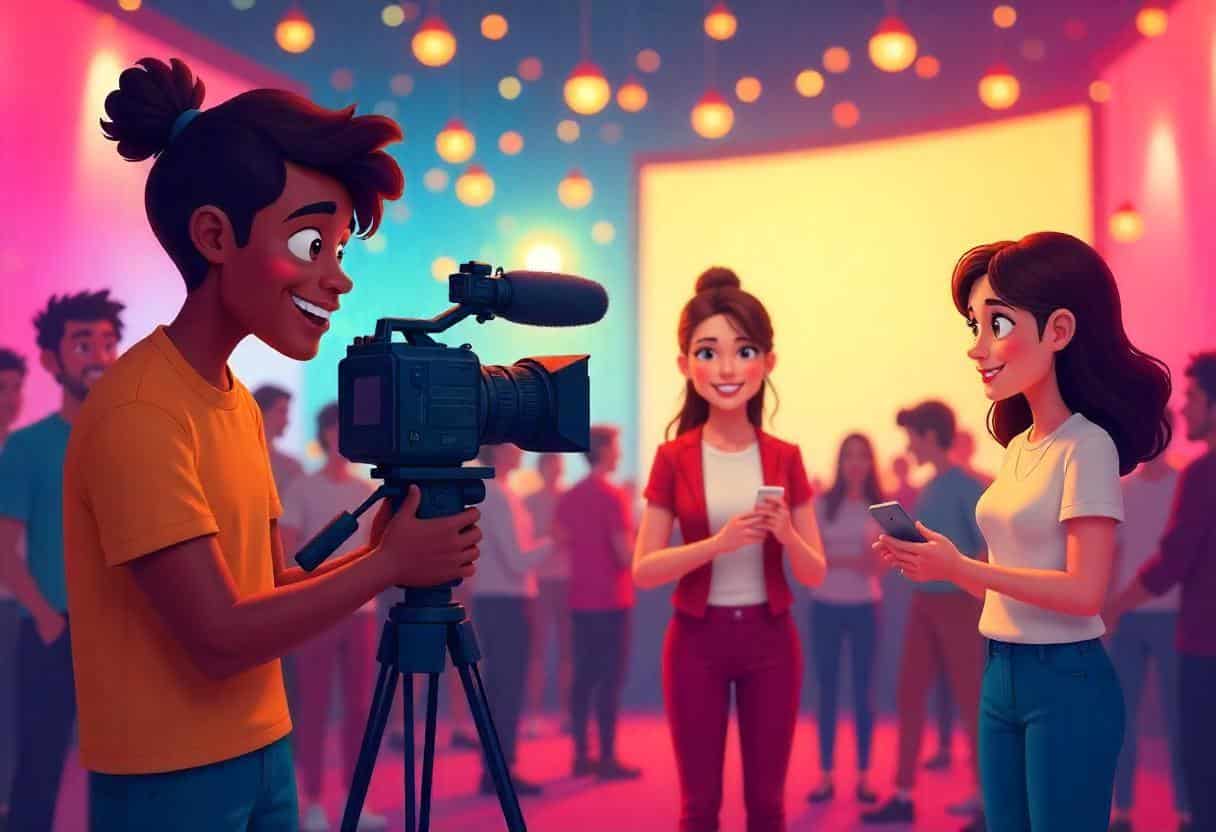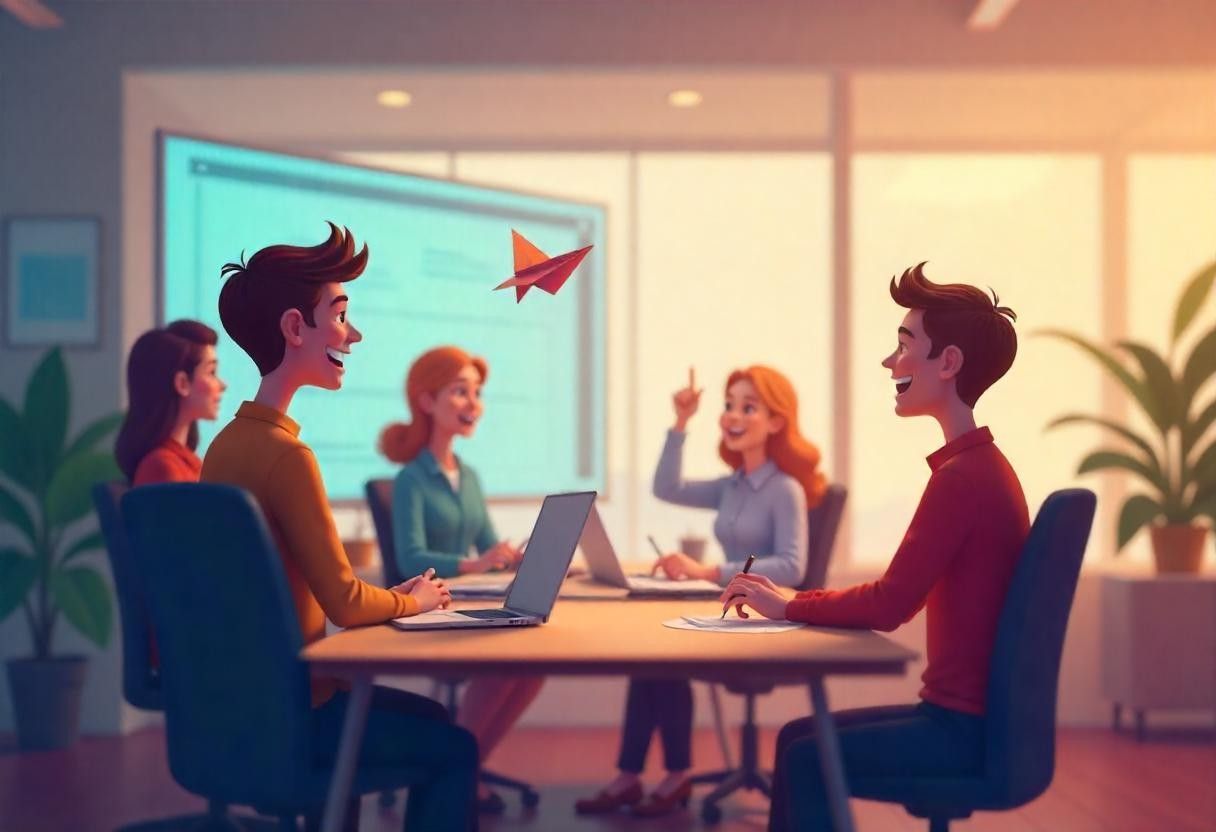Ever watched a video that felt cinematic, even when no one was talking?
It isn’t the script or story every time. Sometimes, those small cutaway shots turn basic edits into visual experiences.
That steam rising from a coffee cup or a sweeping skyline between scenes, B-Roll quietly does the heavy lifting.
Here is what B-roll adds to a video:
- B-roll is essential supporting footage that adds depth and context to videos.
- It enhances storytelling, smoothens transitions, and keeps viewers engaged.
- Strategic planning and shot variety are key to capturing compelling B-Roll.
- Proper editing, sound design, and consistency make B-Roll blend seamlessly.
- Avoid overuse and mismatched footage to keep your B-roll effective and impactful.
Understanding B-Roll: The Unsung Hero of Visual Storytelling
What is B-Roll, exactly?
B-roll is like secondary footage. It is used to support the main story or dialogue visually.
Think of it as the glue that holds a video narrative together.
Let’s say the main interview or action is your A-Roll (the star of the show), and B-Roll is everything else. It adds more flavor, mood, and context to it.
A bit of history:
The term “B-Roll” dates back to the early days of film editing. At that time, editors worked with 16mm physical film reels. “A-Roll” was their main reel. Due to the film’s narrow stock, there were splices in it.
To fix the splice, “B-Roll” was used as supporting visuals. The editor then labeled the A-roll shots odd-numbered and the B-roll shots even-numbered. Even though we’re digital now, the terms stuck around.
A-Roll vs. B-Roll: What’s the Difference?
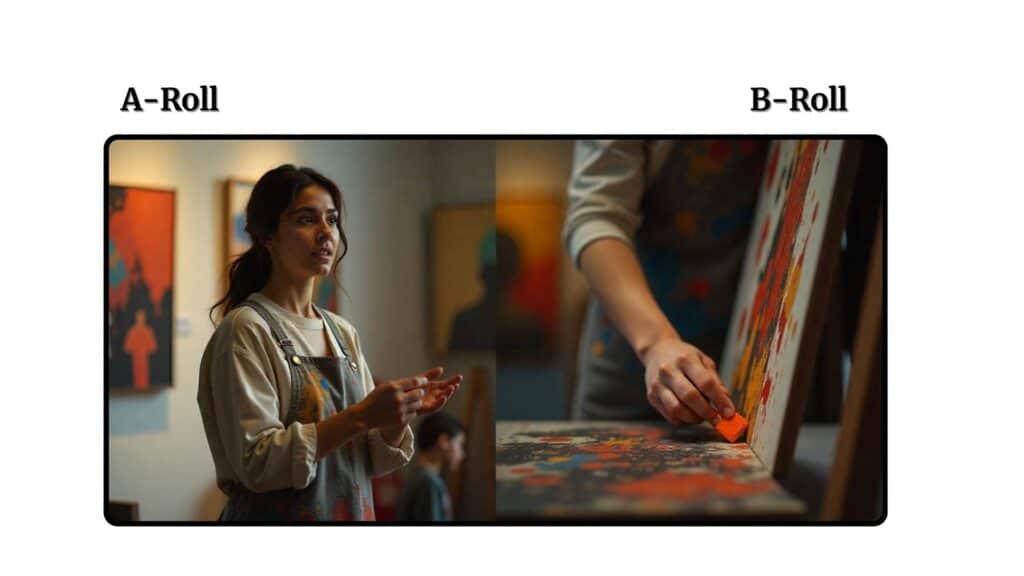
| A-Roll | B-Roll |
| → This is your main footage → Interviews, speaking parts, direct action → The audience’s primary focus point | → This is your supporting footage → Visuals of the location, close-ups of hands → Establishing shots of the city, someone pouring coffee, birds flying overhead |
You get the idea, right?
The Role of B-Roll in Enhancing Narratives
B-roll isn’t just filler.
It brings life to a story. Imagine watching a documentary interview without seeing any footage of what the person is talking about. Kinda flat, right?
B-Roll is all about:
- Sets the scene
- Shows emotion and body language
- Covers edits or awkward transitions
- Adds symbolism, atmosphere, or even foreshadowing
Basically, it makes stories feel real, like we’re there.
Real-World Examples of B-Roll Magic
Chef’s Table (Netflix):
While chefs talk about their lives, the B-roll shows mouthwatering dishes being prepared. You will see the flames in the kitchen and their surroundings. It makes you feel their journey, not just hear it.
Relatable Reads: Video Ads vs. Image Ads: Which Performs Better for Your Marketing? – LocalEyes
The Multifaceted Benefits of Incorporating B-Roll
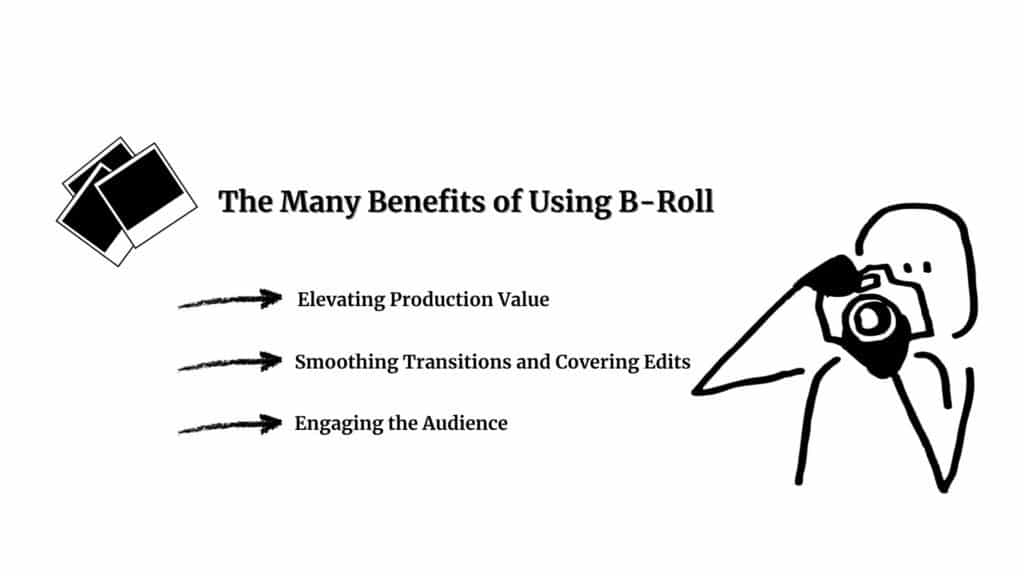
Elevating Production Value
No one enjoys watching a static talking head for five minutes. Even the most interesting topic can feel dull without visual variety.
B-Roll instantly makes your video look more polished and professional. It looks like you actually planned it out.
Here’s how:
- Adds layers of storytelling
- You’re not just hearing a message; you’re seeing it in action
- Brings in cinematic touches
- Adding slow-motion, drone shots, macro close-ups
- Shows attention to detail
Smoothing Transitions and Covering Edits
You know those weird jump cuts where someone’s head jerks. That happened because two clips were spliced together?
That’s where B-Roll comes in like a hero with a cape.
B-Roll smooths out your video like butter on warm toast:
- Hides awkward cuts between sentences or takes
- Covers pacing issues
- Removes a long pause without making it obvious
- Helps transition between scenes or ideas
Engaging the Audience
Let’s face it: our attention spans are tiny. Like, “scroll-in-3-seconds” tiny. That’s where B-Roll saves the day.
B-roll keeps your audience’s eyes entertained and their minds engaged.
It:
- Breaks the monotony of long talking segments
- Adds visual interest to reinforce what’s being said
- Helps your story flow so viewers stay immersed
- Restrict the audience from reaching for the “skip” button
Strategic Planning: Crafting Your B-Roll Blueprint
Planning B-roll doesn’t have to be overwhelming. In fact, when done right, it saves you time and makes your edit smoother.
Pre-Production Considerations
B-roll isn’t something you just “wing” on set.
Well, sometimes it is, but the best B-roll is intentional. Planning it early during scripting and storyboarding sets the foundation for a strong visual narrative.
Why it matters:
- Ensures your visuals match your message
- Helps you avoid scrambling for filler footage later
- Maximizes shooting time and crew efficiency
Identifying Key B-Roll Opportunities
Here’s a handy checklist of when and where B-Roll makes a big impact:
✅ During Interviews
- Show related visuals while someone speaks
- For example, someone is talking about gardening. Now, show them planting, watering, etc.
✅ To Set the Scene
- Establishing shots of a city, office, nature, etc.
✅ To Show Process or Action
- Making coffee, typing on a laptop, opening a door
- Everyday actions are gold for transitions
✅ For Emotional Impact
- Close-ups of facial expressions, hands, and personal objects
✅ During Transitions
- Moving between topics or locations? B-Roll helps smooth it out
✅ To Reinforce a Point
- Talking about teamwork? Show a brainstorming session or people collaborating.
✅ For Cutaways or Edits
- Use B-Roll to hide camera jumps or remove awkward pauses
Organizing Your Shoot
Now that you know what you need, let’s talk about how to actually get it done efficiently.
Tips for a Smooth B-Roll Shoot:
- Create a B-Roll shot list
- Break it down by location, action, or theme
- Prioritize “must-haves” vs. “nice-to-haves”
- Schedule B-Roll windows into your shoot day
- Don’t leave it as an afterthought! Block time just for it
- Shoot extra
- Capture more angles, different framings, slow motion, wide shots, etc. You’ll thank yourself in the editing room.
- Be flexible
- If you see something great happening naturally, grab it!
- Candid B-Roll can be storytelling gold.
- Keep things organized
- Label and sort your clips during import
- Your editor (even if that’s you!) will appreciate it
Shot List Template for B-Roll Planning
| Scene/Segment | B-roll Description | Location | Type (Action, Atmosphere, Detail) | Priority |
| Interview intro | Walking into the room | Outside entrance | Action | Must have |
| Talking about teamwork | Team in the meeting, whiteboard writing | Office | Action/Context | Must have |
| Transition scene | City skyline at sunset | Rooftop/stock footage | Atmosphere | Nice-to-have |
| Emotional moment | Close-up of hands holding a photo | Living room | Detail/Emotion | Must have |
| Final message wrap | Speaker looking out the window | Studio/home | Atmosphere | Nice-to-have |
You can customize this based on your project type. It can be anything (documentary, vlog, brand video, etc).
Check out Green Screen vs. Blue Screen: Which One Do You Need? – LocalEyes
Capturing Compelling B-Roll: Techniques and Best Practices
Now, let’s get into the things that will help you capture the best B-roll footage.
Diverse Shot Types
Variety is what you need to keep your B-Roll fresh and engaging.

Here’s a quick breakdown of the most common B-roll shot types:
| Shot Type | What It Does |
| Establishing Shot | Sets the scene (e.g., city skyline, front of a building) |
| Close-Up | Shows detail and emotion (e.g., hands typing, a teardrop, objects) |
| Medium Shot | Gives context while focusing on a subject or action |
| Cutaway | Shows something other than the main subject to add interest or context |
| Over-the-Shoulder | Adds a personal, immersive feel (great for POV or conversation context) |
| Tracking Shot | Follows a subject’s movement (like walking through a hallway) |
| Slow Motion | Adds drama or emphasis (e.g., wind blowing through hair, a product reveal) |
Equipment Essentials
You don’t need a Hollywood budget to get beautiful B-roll. You can pull it off with a few smart tools:
Must-Have Gear for Better B-Roll:
- Camera or smartphone (with manual controls is a bonus)
- Tripod (For stable, clean shots)
- Gimbal or Stabilizer (Smooths out movement for dynamic walking shots)
- External Lens Attachments (Adds flexibility (wide, macro, telephoto)
- ND Filters (For cinematic exposure, especially outdoors)
- Microfiber Cloth (Clear lens = crisp visuals!)
Creative Movement and Angles
Static shots are fine, but movement adds energy and flow. Try these to make your B-Roll pop:
| Movements/Angles | How To Do It |
| Pan & Tilt | → Slowly move the camera left-right (pan) or up-down (tilt) → It reveals a scene or follows motion |
| Push-In / Pull-Out | → Zoom in or out to draw attention or add drama |
| Low Angle | → Shoot from below to give power or importance |
| High Angle | → Shoot from above to show vulnerability or scale |
| Through Objects | → Frame your subject behind glass, leaves, doors → Adds depth and mood |
Lighting and Composition
Lighting is everything in visual storytelling. Even the best movement or gear won’t save a poorly lit shot.
B-Roll Lighting Tips:
- Use natural light when possible (early morning or golden hour = chef’s kiss)
- Three-point lighting (key, fill, backlight)
- If you’re indoors and want pro-level control
- Bounce light off walls or reflectors to soften shadows
- Practical lights add ambiance and style
Composition Basics:
- Rule of Thirds: Place your subject off-center for more dynamic framing
- Leading Lines: Use paths, roads, or architecture to guide the viewer’s eye
- Depth: Include foreground elements to add a sense of space
Seamlessly Integrating B-Roll into Your Edits
Editing B-roll isn’t just about dropping clips on a timeline. It is more about using them to elevate the story.
Organizing B-Roll Footage
Before you even drag a clip into the timeline, organize them. Otherwise, you’ll waste hours hunting for that “perfect shot of coffee steam” you swear you filmed.
Pro Tips for Managing B-Roll:
- Create folders by location, scene, or subject (e.g., “Office B-Roll,” “Close-ups,” “Transitions”)
- Label clips with specific names instead of generic ones (e.g., “Typing_Closeup” not “Clip_1234”)
- Use color coding or tags in your editing software (e.g., red for must-use, blue for backups)
- Favorite your best takes during import to save time later
Timing and Placement
Timing is everything when it comes to effective B-Roll. Insert it too early or too late, and the impact gets lost.
Best Times to Insert B-Roll:
- Right after a key phrase to visually reinforce what was said
- During pauses or breaths in speech to break monotony
- To cover cuts or stumbles in talking-head interviews
- As a lead-in or transition between scenes or ideas
- At emotional peaks to intensify feeling with visuals
Maintaining Narrative Cohesion
Your B-Roll should serve the story, not distract from it. Every clip you insert should have a reason for being there.
Story-Driven B-Roll Tips:
- Match the emotion of the scene
- Don’t show upbeat visuals in a somber moment
- Avoid random filler that doesn’t connect to the topic
- Use B-Roll as visual metaphors
- Faster cuts for energetic parts, longer B-Roll for reflective or dramatic scenes
Utilizing Sound Design
Good sound design can make your B-Roll feel alive and immersive. It’s not just about music; it’s about creating a whole sensory experience.
B-Roll Sound Design Tricks:
- Add ambient sound (birds chirping, keyboard typing, background chatter)
- Use whooshes or swipes for dynamic transitions
- Layer in music that matches the mood
- Keep the audio subtle so it doesn’t overpower narration
- Sync visuals with audio cues
- Adjust levels so your B-Roll sound doesn’t clash with voiceovers or interviews.
Relatable Reads: 10 Top Video Content Types for an Effective Marketing Strategy – LocalEyes
Common Pitfalls and How to Avoid Them
A few classic pitfalls can sneak in and weaken your video.
Overuse of B-Roll
Yes. B-roll is cool, but too much of it?
❌ What Happens:
- The main story gets lost
- Viewers may feel disconnected
- Your video might feel like a slideshow
✅ How to Avoid It:
- Let your A-roll be the central reel
- Use B-Roll to enhance, not overwhelm
- Show the speaker again between B-Roll segments
Mismatched Footage
Nothing pulls a viewer out of the moment faster than B-Roll that feels “off.”
❌ What Happens:
- B-Roll doesn’t match the tone, location, lighting, or message
- Viewers notice the inconsistency
- It feels forced
✅ How to Avoid It:
- Match tone and energy
- Stick to the same color grading and visual style
- Be mindful of location and continuity
- Use a shot list and storyboards
Case Studies: B-Roll Done Right
Nike’s “You Can’t Stop Us” Commercial
Where B-Roll Shines: This viral spot brilliantly weaves together archival B-Roll from sports events with seamless split-screen editing.
Why It Works:
- Visual storytelling carries the entire narrative
- B-Roll creates emotional resonance: triumph, struggle, unity.
- Technical execution is flawless
- B-Roll is cut to mirror the motion and mood on both sides of the screen.
Takeaway: Powerful B-Roll doesn’t merely support. It drives the story when the visuals are filled with meaning and energy.
Frequently Asked Questions
What is B-roll in video editing?
B-roll is supplemental footage that enhances the main content (A-roll). It provides context, covers cuts, and offers visual support.
How do you make a B-roll video?
Plan B-roll scenes, capture supporting visuals, and shoot from various angles. Then, edit the clips together.
What edit type is best used for editing video B-roll?
The best edit type for B-roll is the cutaway edit. It temporarily shifts from the main shot to related footage and then returns.
What does B-roll do?
B-roll enriches a video by adding visual interest, covering editing cuts, and supporting storytelling.

